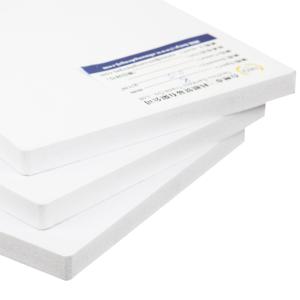
All categories
Featured selections
Trade Assurance
Buyer Central
Help Center
Get the app
Become a supplier

(624 products available)














































A Celotex board is an insulation board with a polystyrene core and an aluminum foil cover. It is a form of rigid board insulation used to insulate buildings. Celotex boards are made of polyisocyanurate (PIR) foam, which is sandwiched between two layers of aluminum foil. This makes them different from other insulation boards that are made of materials like fiberglass or cellulose. Celotex boards are also known as PIR boards.
Celotex boards are used to insulate buildings because they have a high thermal resistance. This makes them suitable for use in energy-efficient buildings. The boards are also lightweight, water-resistant, and easy to install. There are several types of Celotex boards depending on the application.
Celotex GA4000
The Celotex GA4000 is a general-purpose board. It is suitable for use in applications where no structural load is required. The board can be used to insulate floors, roofs, and walls. It is made of PIR foam. The thickness ranges from 50 mm to 200 mm. Its thermal conductivity is 0.022 W/mK.
Celotex XR1000T
This board is specifically designed for use in pitched roofs. It is suitable for use in applications where the board will be exposed to the elements. The board is constructed from PIR foam and has a profiled foil facing. The thickness ranges from 25 mm to 200 mm. Its thermal conductivity is 0.020 W/mK.
Celotex FR5000
This board is specifically designed for use in flat roofs. It is suitable for use in applications where the board will be exposed to the elements. The board is constructed from high-performance PIR foam and has a water-resistant cover. The thickness ranges from 25 mm to 200 mm. Its thermal conductivity is 0.020 W/mK.
Celotex PL4000
This board is specifically designed for use in external walls. It is suitable for use in applications where the board will be exposed to the elements. The board is constructed from high-performance PIR foam and has a multi-layer foil facing. The thickness ranges from 25 mm to 200 mm.
Celotex CW4000
This board is specifically designed for use in cavity walls. It is suitable for use in applications where structural loads are required. The board is constructed from high-density PIR foam and has a perforated foil facing. The thickness ranges from 50 mm to 200 mm. Its thermal conductivity is 0.022 W/mK.
The Celotex board is a versatile insulation material used in buildings. Its features include:
Thermal Insulation
Celotex boards are primarily used to insulate buildings thermally. They help reduce heat loss during cold weather and keep buildings cool during hot weather. This is because they have a low thermal conductivity meaning that heat does not flow through them easily. As a result, heat is retained inside the building or kept outside during summer.
Lightweight
Celotex boards are light. For example, a 2400mm x 1200mm board weighs about 10.5 kg. Their lightness makes them convenient to carry and install. It also reduces the amount of weight a structure has to support.
High compressive strength
The Celotex boards can resist crushing when subjected to high loads without deforming. This is beneficial when the boards are used as load-bearing insulation in floors or walls. High compressive strength ensures durability, and the boards maintain their insulation properties over time.
Moisture resistant
Celotex boards have a foil facing that makes them waterproof. This ensures that water does not get through the boards when they are used in areas that experience high moisture levels. Examples of such areas include kitchens and bathrooms. This minimizes the risk of mold and mildew growth.
Ease of handling and cutting
The boards are designed to be easy to handle, cut, and shape. They can be tailored to fit different sizes and shapes of insulation projects. This allows for customized insulation solutions that meet specific needs and requirements.
Environmentally friendly
These boards are manufactured from recycled materials. This helps reduce waste and promote sustainability. Additionally, the insulation provided by the boards reduces a building's energy consumption. This minimizes the building's carbon footprint and promotes environmental friendliness.
Celotex boards are used in a variety of applications. It is widely used in residential, commercial, industrial, and agricultural applications. The boards provide excellent insulation in roofs, walls, and floors. The following are specific applications of the celotex boards.
When choosing a celotex board for a project, there are a few things that should be considered. This includes:
Q1: What are the standard sizes of a celotex board?
A1: Celotex boards are usually 1200mm wide and 2400mm long. This size makes it easier to install on walls, floors, and roofs. However, there are many other sizes on the market, so it is best to consult with a supplier to find the size that fits the project.
Q2: Are celotex boards sustainable?
A2: Yes, celotex boards are sustainable. They are manufactured with care and precision, and their production process uses energy efficiently. This way, the boards are eco-friendly even when being manufactured. Also, these boards are 100% recyclable.
Q3: How long do celotex boards last?
A3: Celotex boards last a long time. If the boards are installed and maintained correctly, they can be used for up to 40 years. These boards provide a consistent level of insulation for a long time.
Q4: Can celotex boards be used on flat roofs?
A4: Yes, celotex boards can be used on flat roofs. Roofs need insulation to prevent heat loss or gain, and celotex boards are the perfect insulation material. These boards are easy to install and provide a waterproof surface.
Q5: Can celotex boards be painted?
A5: Yes, celotex boards can be painted. However, it is important to use the right type of paint to ensure the boards are well-protected.